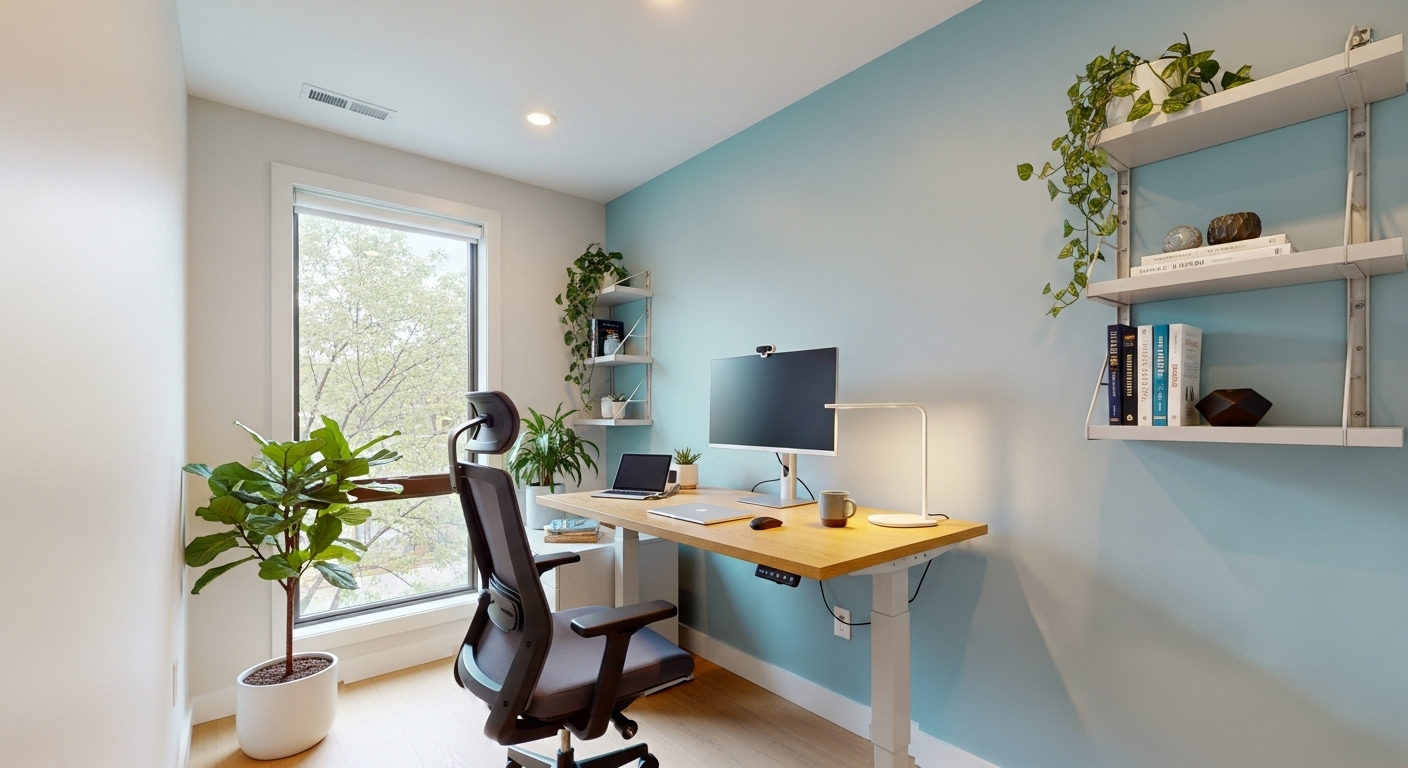The modern coworking space is a paradox. It’s a vibrant ecosystem buzzing with creative energy, networking opportunities, and the electric hum of ambition. Yet, this same environment can be a minefield of distractions, threatening the very productivity it promises to foster. For freelancers, remote workers, and small teams, the challenge isn’t just finding a desk; it’s about carving out a sanctuary of focus amidst the collaborative chaos. This is the art of transforming hubbub into high-flow. Recent trends show a massive shift towards flexible workspaces, making the ability to thrive in a shared environment a non-negotiable skill for the modern professional. Mastering a coworking space means learning to harness its energy selectively, engaging with the community on your own terms, and building a fortress of concentration around your workflow. This guide provides a strategic framework to do just that, moving beyond simple tips like ‘wear headphones’ to offer a comprehensive approach for structuring your day, mastering your physical and digital space, and turning potential distractions into deliberate, productive interactions.
Architecting Your Ideal Workday
Success in a coworking space begins before you even open your laptop. It starts with intentionally designing your day. Without the rigid structure of a traditional office, the onus is on you to create routines that signal to your brain when it’s time to work and when it’s time to rest. Start by implementing a ‘workday launch’ ritual. This could be a five-minute process of tidying your desk, reviewing your to-do list, and setting your top three priorities for the day. This simple act creates a mental boundary, shifting you from a commuting or social mindset into one of deep focus. Similarly, a ‘shutdown’ ritual is crucial. Instead of just packing up and leaving, take ten minutes to review what you’ve accomplished, plan the next day’s priorities, and clear your desk. This provides closure and prevents work from bleeding into your personal time, a common struggle for flexible workers. Time-blocking is your most powerful ally in this architectural process. Divide your day into specific, dedicated chunks for different types of tasks. Schedule 90-minute blocks for deep work—tasks requiring intense, uninterrupted concentration—and be ruthless in protecting them. Intersperse these with shorter blocks for ‘shallow work’ like answering emails, making calls, or administrative tasks. Crucially, schedule your breaks and social time as well. This prevents random socializing from derailing your focus and makes your networking more intentional and effective.
Taming the Tides of Distraction
The most cited drawback of coworking is the potential for constant interruption. Mastering your environment requires a proactive, multi-layered defense against distractions. While high-quality noise-canceling headphones are the first line of defense, they are not a complete solution. Your strategy must also involve visual and spatial tactics. Choose your seat strategically. If you’re easily distracted by movement, avoid desks facing high-traffic areas like the kitchen, entrance, or main walkways. A seat facing a wall or a window can dramatically reduce visual noise. Develop a subtle ‘do not disturb’ signal. This could be a small, specific object you place on your desk—a small sign, a particular mug, or even a desk lamp that you turn on only when you are in a deep work session. Over time, regular coworkers will learn to recognize and respect this signal. For phone calls and virtual meetings, make a habit of using the designated phone booths or private rooms. Trying to take a call at your desk is not only distracting for you but disrespectful to those around you. It forces you to split your focus between your conversation and monitoring your own volume, resulting in a poor experience on both fronts. Finally, manage your digital distractions with the same rigor. Turn off all non-essential notifications on your phone and computer. Use website blockers during your focused work blocks to prevent mindless scrolling on social media or news sites. The goal is not to become anti-social, but to take control over when and how you engage with external stimuli.
Curating Your Personal Productivity Zone
While you don’t own the building, you have complete control over your personal workstation. Optimizing this small patch of real estate is fundamental to achieving high-flow. Think of it as your cockpit; every element should be deliberately chosen for efficiency and comfort. Ergonomics are paramount. Hunching over a laptop for eight hours is a recipe for physical discomfort and mental fatigue. Invest in a lightweight, portable laptop stand to bring your screen to eye level, and a separate, ergonomic keyboard and mouse. This small investment pays massive dividends in comfort and sustained focus. Next, perfect your ‘go-bag.’ Your work bag should be packed with everything you need so that setup and breakdown are swift and thoughtless. This includes your laptop and charger, headphones, keyboard, mouse, a notebook, and any necessary dongles or adapters. Having a standardized kit eliminates the daily friction of remembering what to bring and ensures you’re always prepared. Maintain a clutter-free desk. A messy space leads to a messy mind. At the end of each day, take two minutes to clear your desk of everything except the essentials. This simple habit makes your ‘workday launch’ ritual smoother the next morning. It also signals respect for the shared space. Personalize your zone, but do so minimally. A small plant, a framed photo, or a favorite notebook can make the space feel like your own, which aids in psychological comfort and focus. However, avoid excessive personal items that create clutter and make it difficult to pack up quickly.
The Art of Strategic Socialization
One of the primary reasons people choose coworking is for the community. However, this community can be a double-edged sword. Unstructured socializing is the enemy of deep work. The key is to shift from reactive, random conversations to proactive, strategic engagement. Treat networking as a scheduled activity, not a constant state of being. Instead of leaving yourself open to interruptions all day, use your designated break times for this purpose. When you go to the kitchen for coffee, be present. Make eye contact, smile, and be open to a short chat. This is your time to connect. When you return to your desk and put your headphones on, you’re signaling that the social window is closed for now. If you want to have a longer conversation with someone, schedule it. Say, ‘I’d love to hear more about that. Do you have 15 minutes to grab a coffee this afternoon?’ This respects both your time and theirs, and transforms a potential 45-minute distraction into a focused 15-minute meeting. Be mindful of others’ focus signals. Just as you want your ‘do not disturb’ signs to be respected, be observant of others. If someone is wearing headphones and intensely focused on their screen, it’s not the time to tap them on the shoulder to ask about their weekend. Using a tool like Slack or the coworking space’s community app can be a less intrusive way to reach out for non-urgent matters. By structuring your social interactions, you get the best of both worlds: the focused solitude needed for deep work and the collaborative energy that makes coworking spaces so valuable.
Leveraging Space Amenities for Peak Performance
Your productivity potential in a coworking space extends far beyond your assigned desk. The most effective coworkers treat the entire facility as a suite of tools, each designed for a specific purpose. Your desk is your base for focused, individual work, but it’s not always the best location for every task. Make it a point to understand and utilize all the amenities your space offers. Does it have dedicated quiet zones? These are gold for your most demanding deep work sessions, offering an environment with a shared commitment to silence. Use meeting rooms not just for clients, but for your own team’s brainstorming sessions or even for a solo ‘sprint’ when you need to spread out materials like whiteboards and sticky notes. Many people forget that these rooms can be booked for individual use, providing a private, distraction-free office for a short period. Phone booths are another underutilized asset. They are not just for calls. If you need to record a podcast, practice a presentation, or just have a few minutes of absolute privacy to think through a complex problem, a phone booth is the perfect micro-environment. Also, pay attention to the different types of seating areas. A soft chair in a common lounge might be the perfect spot for casual reading or answering emails, providing a change of scenery that can reset your focus. By consciously matching the task to the right part of the space, you can create a more dynamic and effective workday, avoiding the mental fatigue that comes from sitting in the same spot for eight hours straight.
The Digital Toolkit for Coworking Success
Your physical strategies for productivity should be complemented by a robust digital toolkit. The right software and applications can help you stay organized, track your time, and block out digital noise, reinforcing the focused environment you’re trying to create. A task manager is non-negotiable. Tools like Asana, Trello, or Todoist allow you to externalize your to-do list, clearing mental clutter and ensuring nothing falls through the cracks. At the start of each day, consult your task manager to set your priorities, and at the end of the day, update it to prepare for tomorrow. This digital ritual syncs perfectly with your physical ‘startup’ and ‘shutdown’ routines. Time-tracking software, such as Toggl, Clockify, or Harvest, is also incredibly powerful. It provides hard data on where your hours are actually going. You might feel like you’re being productive, but the data can reveal how much time is lost to context-switching or shallow tasks. Use this information to refine your time-blocking strategy and hold yourself accountable to your deep work goals. As mentioned earlier, distraction blockers are essential. Apps like Freedom or Cold Turkey can block access to specific websites and applications across all your devices for a set period. This removes the temptation for mindless browsing and forces you to stay on task during your scheduled deep work blocks. Finally, master your cloud storage and communication tools. Having everything stored on platforms like Google Drive or Dropbox means you can work seamlessly from any location within the space. For communication tools like Slack, be ruthless with your notification settings. Turn off all desktop and mobile alerts, and instead, ‘batch’ your check-ins, treating it like email rather than an instant messenger that demands an immediate response.
Conclusion
Thriving in a coworking space is a learned skill. It requires moving beyond a passive approach—where you are simply a victim of your environment—to an active, strategic one. It’s about becoming the conductor of your own productivity symphony, knowing when to bring in the collaborative energy of the orchestra and when to demand the focused silence for a solo performance. The key takeaways are rooted in intentionality. First, you must architect your day with deliberate routines and time-blocking to create a predictable structure for focus. Second, you must build a multi-layered defense against distractions, using headphones, strategic seating, and clear social signals. Third, curate your personal workspace for ergonomic comfort and efficiency. Fourth, engage with the community on your own terms, scheduling social interactions rather than letting them happen randomly. Finally, leverage the entire space and a powerful digital toolkit to support your workflow. By embracing these strategies, you can transform the potential chaos of a shared office into a powerful engine for high-flow and peak performance. In an increasingly flexible working world, mastering this skill is not just about getting more done; it’s about future-proofing your career and designing a work life that is both productive and fulfilling.





